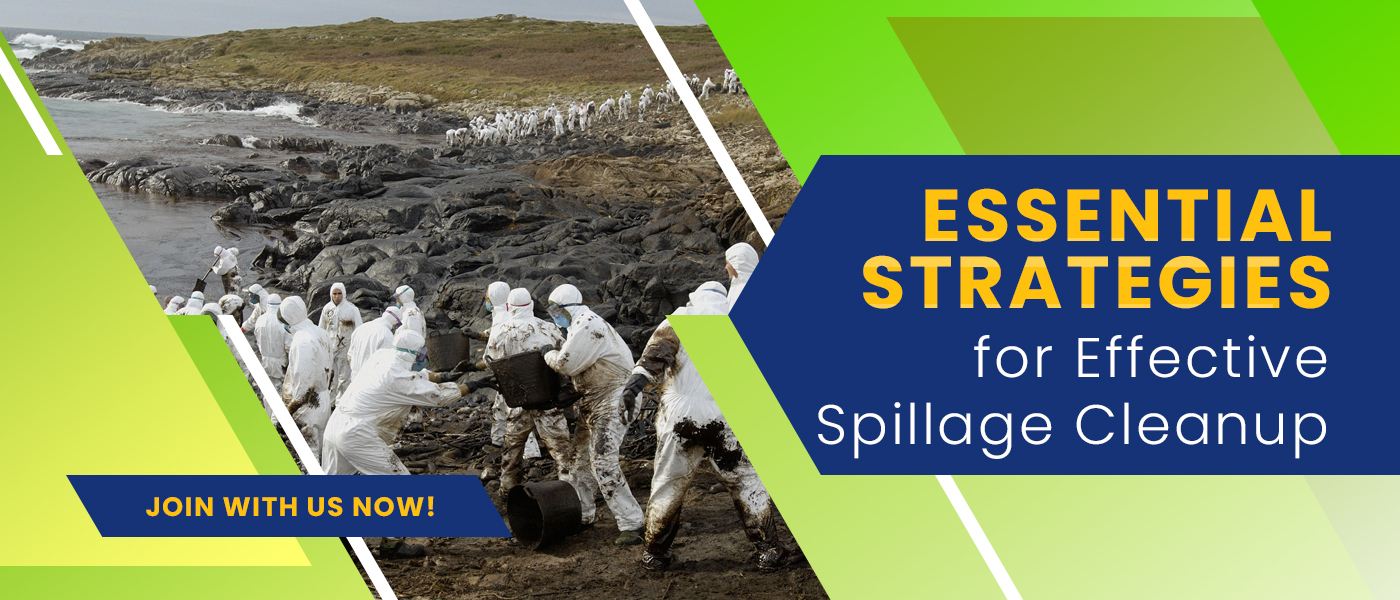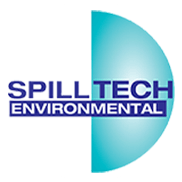Essential Strategies for Effective Spillage Cleanup

Oil is the most useful and commonly used fuel in our lives. It is used in everything from heaters used in our homes to heavy machineries in factories. However, with the benefits, there also comes challenges in using oil and oil based products so extensively. Spillage, leakage or accidents are inevitable and the damage it results in, is incomparable. Along with safety and prevention practices, one should be well equipped to handle spillage when it happens.
Everyone needs to be aware about the basic strategies and the right products to be used when accidents happen. Because timing is of essence when it comes to spillage containment. Incorporating efficient spillage containment strategies for the workplace and as a basic training for all is fundamental for operational excellence. Let us explore all the methods you can employ for quick and efficient spillage cleanup.
Take Action for Prevention: Avoid Oil Spillage
Prevention is always better than cure so it is better to avoid spillage in the first place. The best method is to have a set of data-backed practices that limit the chances of spillage.These practices need to be incorporated in everyday activities and strict execution of the same should be followed. Ultimately it will contribute towards a safer work environment.
In compliance with regulatory standards following are the prevention practices that needs to be followed:
- Perform Risk Assessments Regularly – This helps in identifying potential danger beforehand so that necessary precautions can be taken.
- Proper Storage and handling – Most accidents happen during storage and handling. The use of proper storing methods will reduce the risks.
- Specially Trained Employees – Every employee who will be in charge of handling, relocating or storing chemicals should have a basic training in handling chemicals with precaution and know how to respond to oil spills.
- Updated and Well Maintained Equipment – Over time equipment becomes less efficient and becomes a potential source of hazard. Keeping all equipment updated is the only solution.
- Establishing a Response Plan – Accidents may come as a surprise but you should always be prepared. A response plan about the ways oil spills will be mitigated needs to be in place.
The prevention activities help in significantly reducing the risks associated with oil spills. But oftentimes accidents are unavoidable and in those situations, you should be prepared to implement a response plan.
Action Plan for Oil Spill Containment and Spillage Cleanup
Whether it’s a household or a workplace, there can be several possible points for spillage to occur. Sometimes the leaks are so small that localizing the problem becomes an issue. However, identifying and locating the point of leakage or demarcating the area where spillage has happened is the very first step. Once the problem is identified, the response plan can take action.
In case of all kinds of oil spillage, time is of essence, the action plan needs to be quick and efficient. This is because oil can seep in more with time and causes greater damage than is immediately noticeable. So, for any kind of spills, the spread of the oil needs to be controlled first and then the spilt amount needs to be cleaned up.
The action plan to be followed in case of oil spill are detailed below.
Detection & Localisation
This is one of the trickiest parts because most of what is happening is still unknown at this point. Fast detection of leakage or spills will ensure quick cleaning and contain the damage to a small portion. The person locating the problem should have followed all safety measures like using gloves, mask etc.
The detection of the source and scope of spill should be immediately followed by sending information to special teams equipped and skilled to handle this situation. Identifying the scope of the spill along with the source greatly helps in devising the management plan for the situation.
Assessment & Preventing Spread
Following the spill, the area needs to be secured to stop any exposure or spread. This includes doing a preliminary assessment to confirm the chemical that was spilled, its approximate quantity and spread, the flow rate, and the places in the warehouse that it touched.
Make sure everyone who isn’t absolutely necessary is out of the way, and block off the damaged area as much as you can to prevent anyone from coming in and maybe getting hurt.
The ideal situation is for a marked container to make it easy to identify the spill. Those with the necessary training or certification in chemical identification should be contacted if an unknown chemical spills in the warehouse. General laborers shouldn’t take a chance by trying to identify an unidentified chemical.
Potential risks related to the substance should be determined after it has been confirmed. Potential risks can arise from eating, skin contact, or inhalation. The management of the chemical spill in the warehouse will be guided by this information in the future.
Calling for Response Team
It is essential to communicate as soon as possible with emergency response teams, both internal and external, including warehouse management. In the absence of timely communication, errors may be made that endanger persons or cause property damage. Notifying emergency response teams will enable the mobilization of specialized spill response activities and ensure compliance with reporting regulations.
Actions For Containment & Cleanup
To stop more pollution, the spill needs to be contained once the proper management, as well as internal and external parties, have been informed. Locate the source if the spill is still happening. Possible courses of action include:
- closing the switch for the emergency shut-off
- adjusting a valve
- sealing a gap inside a container.
The time has come to contain the spill after it has been stopped. Others should transfer any products, materials, and equipment close to the spill inside the warehouse while the team gathers containment supplies and equipment to prevent spoiling or damage during containment and cleanup. There are several methods for cleaning up oil spills depending on the amount spread. Some of the commonly used materials are spill absorbent pads, absorbent spill mata, flexible containment tray, protective goggle, nitrile gloves, etc.
Even after the oil is removed from the surface, it can remain below the surface so the clean up needs to be extremely thorough. However, you cannot use chemicals to clean chemicals as it will become counterintuitive. That’s where experts like Spilltech come in.
Using Spilltech’s Bioremediation Solutions
Spilltech uses advanced bioremediation solutions for cleaning up oil spills. This has a clear advantage over other cleaning supplies because it relies on natural organisms to break down the oil and clean up without any trace. Spilltech’s handy bioremediation kits come in different shapes and sizes that perfectly fits the problem. We have premiere oil spill cleanup products for cleaning oil off of driveways to cleaning oil off of soil surfaces and much more.
Conclusions
Oil spills are unavoidable but simply following prevention steps and being a little proactive you can reduce the impact of oil spills. The action plan for after an oil spill occurs can help in minimising the risks and prevent further damage. Always be ready to contact oil spill experts because they can handle emergency situations more efficiently. However, the best way is to always avoid such accidents following the prevention methods.

Spilltech Environmental
Welcome to Spilltech Environmental Ltd, your premier destination for cutting-edge oil spill cleanup services in Ireland. With our headquarters based in Monaghan, we pride ourselves on being pioneers in the industry, offering unparalleled expertise and innovative solutions for handling oil spillages of any scale.

